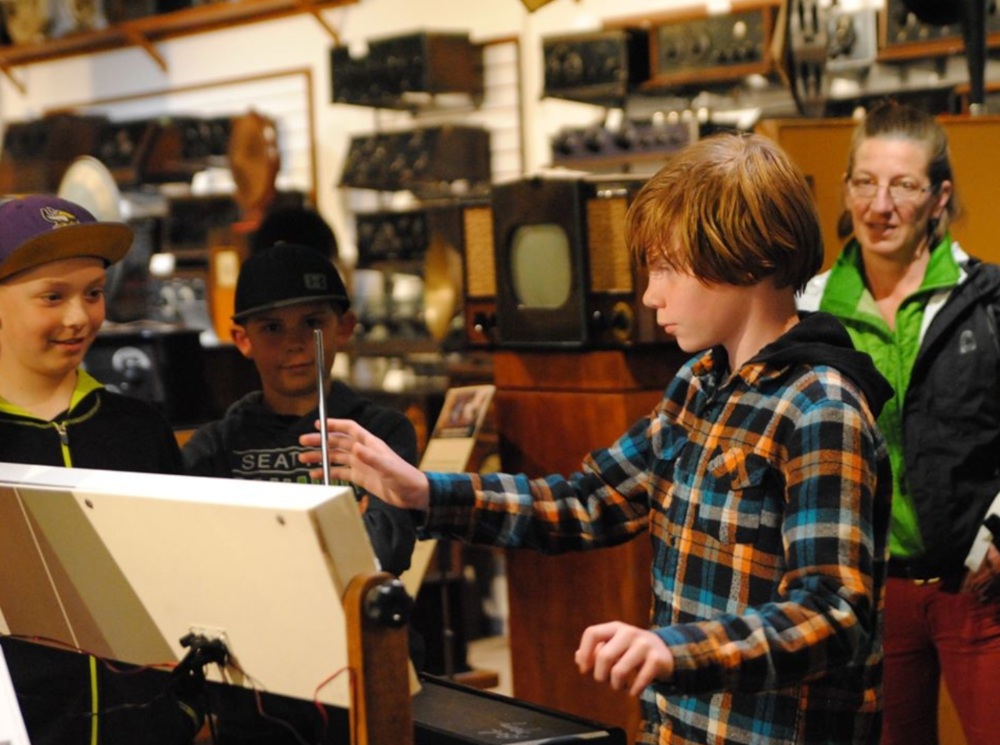It’s 12:15 p.m. on a Saturday. SPARK Museum of Electrical Invention has been open for more than an hour now, and in that time a handful of families have traipsed through the doors looking for weekend fun and educational adventure.
Where did the kids head first?
Naturally, they lined up at the many interactive exhibits in SPARK, getting ready to mash all the buttons.
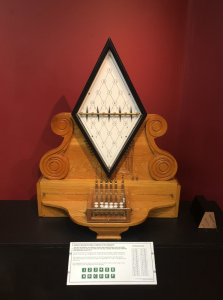
SPARK’s working replica of the Cooke-Wheatstone 5-needle telegraph, built by craftsmen in Europe, is one of the only faithful replicas of the gorgeous original telegraph. The telegraph has a unique way of registering received characters, and it truly is fascinating to watch it work.
If running a fun, family museum is to be a success, at least some of the credit must go to the invention and construction of brain-stimulating interactives that are sturdy enough to withstand the rigor of a thousand ungentle fingers.
“The simple ability to operate some sort of replica — if not the real thing — makes the rare and priceless original on display all the more appreciated, especially to the casual visitor,” says Tana Granack, SPARK Museum’s director of operations. “Visitors feel let down if they approach something they’ve heard about that doesn’t work or is out-of-order. We’re adding more interactives all the time. It’s a challenge, but people really respond and appreciate the immediate experience they get with an interactive.”
At SPARK, our durable lineup of interactive exhibits includes a number of crowd pleasers. Here are just a few:
SPARK’s working replica of the Cooke-Wheatstone 5-needle telegraph, built by craftsmen in Europe, is one of the only faithful replicas of the gorgeous original telegraph. The telegraph has a unique way of registering received characters, and it truly is fascinating to watch it work. Unlike the Morse telegraph, which also was developed in 1837, the Cooke and Wheatstone telegraph used no codes. Instead, any of the 20 letters on the dial can be indicated by making two needles point to it. You’ve got to try it!
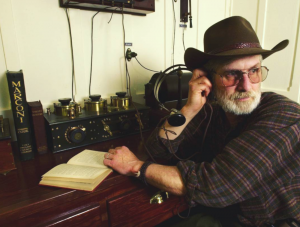
SPARK has an old Morse telegraph device, on which visitors can send a distress signal as if they’re inside the communications room on the Titanic (and even see the signal as its visual representation pulses around the room).
There’s also an old Morse telegraph device, on which visitors can send a distress signal as if they’re inside the communications room on the Titanic (and even see the signal as its visual representation pulses around the room).
Are you tone deaf or pitch perfect? SPARK has a device that tests your ability to reproduce audio tones. It’s harder than you might think!
There’s also a Van de Graaff generator, on which visitors can test and observe the principles of static electricity buildup and discharge — and make their hair stand on end. Do you know what makes a lighting rod work? You might be wrong, but you’ll learn the right answer from a docent at the Van de Graaff generator.
There’s an old record player you can crank up and listen to, with the help of a docent. If it gets too loud — despite that it uses zero electricity — just ask the docent to “put a sock in it.”
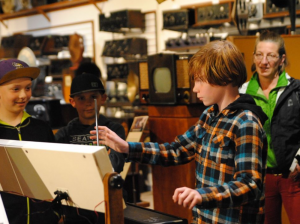
Have you heard of a theremin? It’s a musical instrument you play without touching. Yes, it’s true! The theremin is a lot of fun and definitely a crowd favorite.
Have you heard of a theremin? It’s a musical instrument you play without touching. Yes, it’s true! The theremin is a lot of fun and definitely a crowd favorite.
SPARK Museum also is home to a functional replica of Nikola Tesla’s Egg of Columbus, which he demonstrated at the 1893 World’s Columbian Exposition. Push the button and watch an egg stand on end.
The always-entertaining love machine is a carnival-style game that tests a person’s romantic potential.
The vintage cash register has working buttons and that satisfying ker-ch-uh-ker-chunk sound when you pull the lever to ring up a customer.
The Sound Laboratory lets you adjust pitch and frequency to create your own custom electronic music.
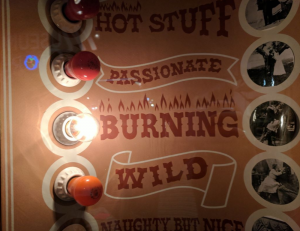
The always-entertaining love machine is a carnival-style game that tests a person’s romantic potential.
The Tektronix 564B solid-state storage oscilloscope lets you see what your voice looks like.
An original telephone switchboard lets you practice connecting callers to each other (or, for the nefarious types, it lets you practice routing phone calls away from your business competition).
Not to be forgotten, the Cage of Doom is the biggest and baddest interactive of them all. MegaZapper shows are Saturdays and Sundays at 2:20 p.m., and visitors must be 18 or older to enter the cage. Learn more here.
Want to get interactive with your science learning? Come to SPARK and look for the contraptions and devices bearing green dots, which mark them as interactive exhibits. We’re constantly maintaining our interactives, so you can trust that when you come to SPARK, they’ll work — despite the thousands of eager button-mashing fingers they’ve encountered along the way.
Oh, and anything with blue dot is a working model of something or other, too; just ask at the front desk for a demonstration schedule.
See you soon!
